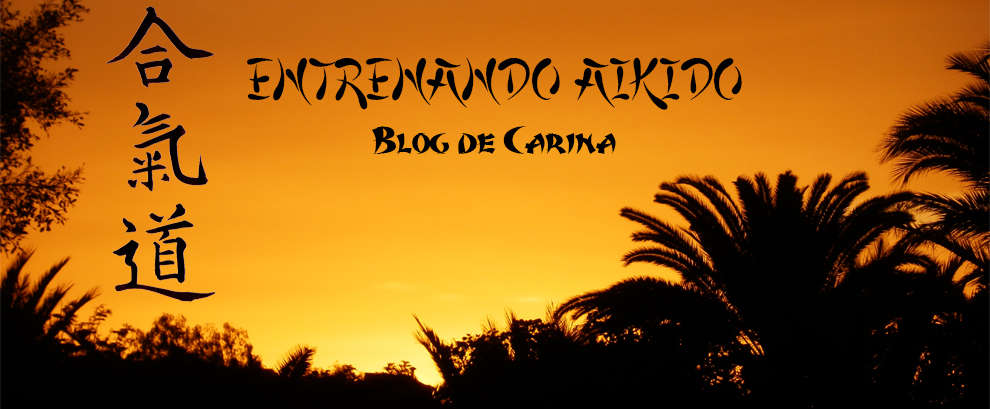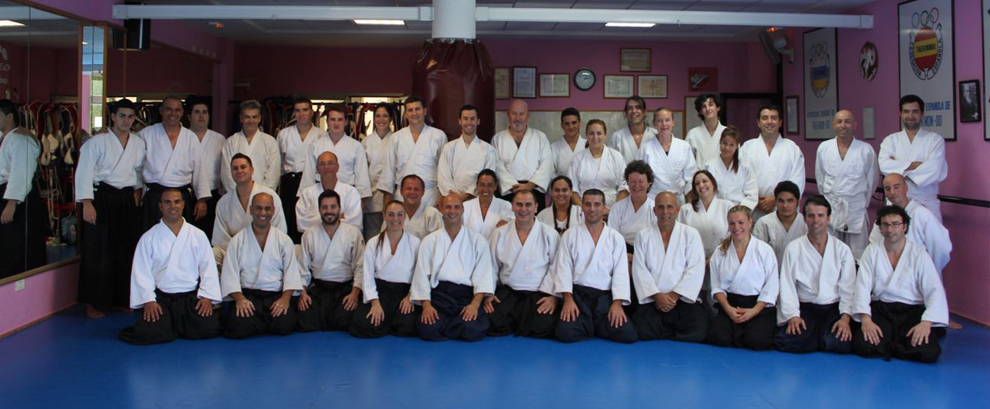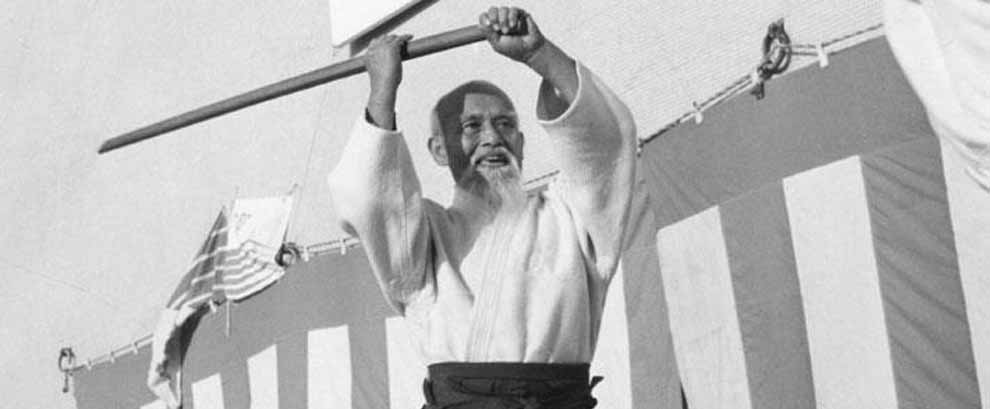 photo: jion by elsueniero/Juan Batman
photo: jion by elsueniero/Juan BatmanEl kata es necesario para aprender las técnicas correctas de proyección y agarre. Especialmente importantes son los taisabaki, kuzushi, tsukuri, kake, y riai.
Shokichi Natsui, en Técnicas formales de judo
Debido a que es peligroso si se usa en los entrenamientos libres, el atemiwaza sólo se practica en modelos de técnicas controladas, lo que se llama kata.
Isao Inokuma y Sato Nobuyuki, El mejor Judo
Diez principales propósitos del Kata:
1. Para dar un método de entrenamiento básico al judo
2. Para desarrollar las técnicas representativas básicas del judo
3. Para garantizar un desarrollo armónico técnico y una amplia gama de técnicas de judo
4. Para asegurar un cuerpo armoniosamente desarrollado
5. Para mejorar el control mental
6. To show the mechanics and the spirit of judo on display
7. To promote the development of the spirit of judo
8. To ensure the development of the principles and values of self-defense
9. To provide a suitable type of practice judo for all
10. To ensure the preservation of traditional symbolic values of judo
Tadao Otaki y Donn F Draeger, Judo Formal Techniques
Kiai is not well understood by Westerners, You can even think of him only as the cry that emits a judoka when you run a technical. This is a very narrow meaning. There is not one word in the English language, which it is accurate enough to explain what is the kiai. But for your purposes you can think of it as an aura of controlled power, Plastic nerve to do “flow” physically, as it is perceived by the mind. It is essential that you witness the kiai generated by an expert instructor in kata so you can come to understand the spirit of the kata.
Tadao Otaki y Donn F Draeger, Techniques formal de Judo
Uke's role is to attack with force and conviction, not anticipating movements Tori.
J.C. Heppenstall, Nage no kata y katame no kata
Kata is exercise esthetic, similar to ballet composed of series of forms.
Gosei Yamaguchi Sensei, The basics of Goju-Ryu Karate
In practice a kata, The following points are important:
1.Correct sequence: The movements are predetermined as is its sequence. The deviation from this is permitted.
2.Caresses: It refers to a preset movement line. The interpreter must follow this kata floor plan for the kata is done correctly.
3.Correct understanding: Each movement in the kata, either offensive or defensive, It has a meaning. The performer must demonstrate an understanding of the rationale behind each action through.
4.Application: How each movement has a meaning, you have to learn all the features of each position. This is the hidden meaning of the form and is not easily understood by the casual observer.
5.Rhythm: The pace of the fighting is varied, sometimes it's fast, sometimes slow. The techniques are grouped, marked by pauses, continuation, and combined. in this way, kata rhythm to follow the real battle. Each kata has its own particular rhythm that the artist must master in order to demonstrate their connection with the fight. The rate includes time, soft focus and flexible movement.
6.Breathing: The conclusion of each movement usually coincides with the exhalation, while preparatory positions and movements are done when the artist inhales. Know how to do is an important part of the kata. We must also give a kiai, or cry, and tighten at the right time in each kata. In most, There are two movements that require a kiai.
7.Correct positioning of the body parts: This is especially important in the case of hand techniques, because a small change in position can cause the form is incorrect,
Robin T Rielly, Shotokan Karate completo
Word: la “form” Budo. Each martial art – judo, kendo, aikido, etc – It has its own forms, Actions, procedures. Beginners should learn the kata and assimilate and use. Más tarde, They begin to create from them, specifically in each art.
Deshimaru, The path to Zen Martial Arts
Word
Kata or katachi 形 in Japanese means silhouette or pattern or shape. In Japanese it is said that everything starts form (katachi). Kata in budo – Japanese martial arts – are stylized forms. Kata are usually chains of different techniques – waza technique
Japanese martial arts can be divided into kobudo – traditional martial arts – y Gendai budo – modern martial arts.
Kobudo
There are many styles and schools -ryuha- Kobudo. Probably the best known are jujutsu and kenjutsu. Kata is one of the main methods of training in kobudo. In such kenjutsu kata is done in pairs. The teacher or senior is usually the aggressor, finally loses the stylized meeting, el uchidachi o ukedachi. This is equivalent to uke or attacker in aikido. The student or junior winner takes the role, the shidachi. This is the equivalent of tori in aikido, the running technique. Different ryuha may use different terms.
Gendai Budo
Unlike using kobudo kata as the primary method many gendai budo training include kata only as an element of training. The techniques that are strung in a logical order for the study. In judo and karate kata one can take several minutes to complete.
Judo
For example judo training consists of training and preparation uchikomi – movements practice – and nagekomi – projections of practice, randori – Informal competitive training, shiai – fighting – and kata – stylized forms. In recent years the judokas who are interested in kata can also participate in kata competitions. But I think it's fair to say that training in judo kata is not directed to the lower grades. Especially young judokas tend to focus on the randori and shiai.
Almost all judo kata become a partner. The judo kata techniques are in their majority representation techniques chosen for specific reasons. In the Nage no Kata – kata of throwing techniques – techniques are practiced on both sides, left and right. This is important because judo is practiced usually only on one side.
Kenji Tomiki Sensei, a master of judo and aikido was involved in the formulation of judo kata for self-defense, la Kodokan Goshinjutsu no Kata. One of the principles of this kata is that the critical distance ai ma or is slightly wider than the nip of most techniques judo. For both it, It was influenced by jujutsu and aikido.
Karate
Karate training consists of training preparation and basic movements, Kumite – Informal competitive training, shiai and kata. But in contrast to judo, karate kata is perhaps the most important element, even for young karatekas.
The kata of karate is usually done solo. El attacker attackers son imagined. En bunkai – rupture or analysis- a kata is applied to a real attacker version so kata becomes a pair kata.
Kata training
It requires precision kata, rigor, Total concentration and knowledge. When you're doing a kata you have to find their true pace. And you have to tell a story. For the people watching can feel the real meaning of the kata and feel satisfaction when you finish. As if they had been hearing a good story. With a grand finale.
Aikido
Then, How kata is related to aikido? No specific kata in most styles of aikido although there are weapons kata: bucks – sword – and jo – palo – in some styles. Some people call all the techniques of aikido kata. But freedom of the techniques of Aikido seems far from the accuracy of the formal kata. Karate kata for example is very detailed. The feet and toes have to be in certain positions, hands must be in the right places, and hips must be at the correct height. Some styles include some uniformity dojos. I saw the choreography in aikido demonstrations where everyone is doing the techniques simultaneously, and synchronized swimming. But that's weird and unrealistic and most Aikido is normally free. The techniques change depending on myriad factors. Things like the experience of uke and nage, the size of their bodies, attack power. Or what your teacher has tried to emphasize to the lesson or what they themselves are trying to understand his training at that time.
Aikido does not have the rigor of external kata. That may be a weak point. If our training is neglected or decentralized. But it is also its strength, if we train our internal rigor.
So, although aikido lacks the precision and detail of the formal kata, we can still think of it as kata. The kata, but free and open.
Niall
Feature Articles
word
http://es.wikipedia.org/wiki/Kata
judo kata
http://en.wikipedia.org/wiki/Judo_kata#Kata_.28forms.29
karate kata
http://en.wikipedia.org/wiki/Karate_kata
bunkai
http://es.wikipedia.org/wiki/Bunkai
kendo kata
http://en.wikipedia.org/wiki/Kendo#Kata
kenjutsu
http://es.wikipedia.org/wiki/Kenjutsu
iaido
http://en.wikipedia.org/wiki/Iaido
article koryu.com: uchidachi and shidachi
http://www.koryu.com/library/tnishioka1.html#f2
mi blog en aikiweb
mi blog en wordpress
© niall matthews 2012
traducción Carina









Recent Comments